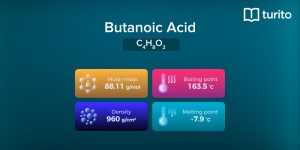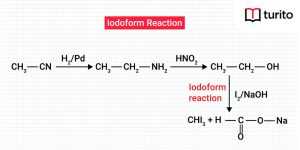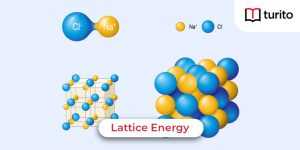Nitric oxide or NO is a colorless oxide of nitrogen. This gaseous compound includes unpaired electrons and belongs to the heteronuclear diatomic molecules. It is also called nitrogen monoxide. It is found in human cells and has several health benefits. You must not confuse nitric oxide with nitrogen dioxide (NO2), a major air pollutant, or with nitrous oxide (N2O), an anesthetic. The following sections explore the nitric oxide formula, properties, and benefits of nitric oxide.
What is Nitric Oxide?
Nitric oxide is a molecule containing nitrogen and oxygen. It is diatomic and occurs as a free radical. Nitric oxide occurs in combustion systems. It can be generated by lightning in thunderstorms. It also occurs in mammals as a signaling molecule in various physiological and pathological processes.
Nitric oxide is also a toxic air pollutant emitted by automobile engines and power plants. The man-made emission sources include:
- Power stations
- Combustion processes both residential and commercial
- Motor vehicles
- Road transport
- Kerosene space heaters
- Tobacco smoking
When nitrogen undergoes oxidation, it results in nitrogen monoxide formation. It is prompted by the addition of electric sparks or heat. The following reaction occurs:
N2 + O2 → 2 NO
Nitric Oxide Formula and Structure
The nitric oxide formula is NO. Thus, nitric oxide is also called:
- Nitrogen(II) oxide
- Oxonitrogen
- Nitrogen oxide
- Nitrogen monoxide (IUPAC name)
It is a free radical with an unpaired electron. Therefore, it is sometimes written with a dot denoting the unpaired electron as follows:
- N=O or •NO
The lewis dot structure of nitric oxide gives further insight into the electron distribution.

The structure shows that nitric oxide contains:
- Two double bonds
- Three lone pairs of electrons
- One unpaired electron on nitrogen
Preparation of Nitric Oxide
Several methods have been used to obtain nitric oxide in the laboratory and in commercial settings. Some of the most widely accepted methods are as follows:
Reduction of Nitric Acid with Copper
In labs, nitric oxide is prepared by the reduction of dilute HNO3 with copper. The reaction proceeds as follows:
8 HNO3 + 3 Cu → 3 Cu(NO3)2 + 4 H2O + 2 NO
From Sodium Nitrite
2 NaNO2 + 2 FeSO4 + 3 H2SO4→ Fe2(SO4)3 + 2NaHSO, + 2H2O + 2 NO
From Potassium Nitrite
An alternative route involves the reduction of nitrous acid in the form of sodium nitrite or potassium nitrite:
3 KNO2 + KNO3 + Cr2O, → 2 K2CrO4 + 4 NO
Ostwald’s Process
In commercial settings, Ostwald’s process helps produce nitric oxide when ammonia is oxidised at 750–900 °C in the presence of platinum as a catalyst:
4 NH3 + 5 O2 → 4 NO + 6 H2O
Properties of Nitric Oxide
Nitrogen monoxide comprises nitrogen and oxygen. Therefore, its molecular mass is the sum of nitrogen and oxygen atomic masses. The molecular mass is 30g. It is an odourless gas. However, its solid and liquid states are blue. It is a highly reactive molecule due to the presence of an odd number of electrons. The important properties of nitric oxide are stated below:
|
Chemical Reactions of NO
Nitrogen monoxide or nitric oxide reacts with oxygen and other molecules to create various different products. Following are some of the important chemical fractions involving NO.
Condensation
Nitric oxide condenses to a liquid and dimerises to dinitrogen dioxide. However, this association is weak and reversible. The distance between N–N atoms in crystalline NO is 218 pm. It is almost twice the distance between N–O.
Decomposition
The decomposition of nitric oxide is endothermic. It decomposes into its constituent elements– nitrogen and oxygen.
2 NO → O2 + N2
Oxidation
Nitric oxide converts to nitrogen dioxide when exposed to oxygen. The balanced chemical equation for the reaction is as follows:
2 NO + O2 → 2 NO2
Reaction with Water
Nitric oxide reacts with oxygen and water to form nitrous acid. The balanced chemical reaction is stated below:
4 NO + O2 + 2 H2O → 4 HNO2
Reaction with Halides
Nitric oxide combines with halides like fluorine, chlorine, and bromine to produce nitrosyl halides. Its reaction with chlorine is stated below:
2 NO + Cl2 → 2 NaCl
Reaction with Nitrogen Dioxide
It reacts with nitrogen dioxide, a radical to form the intensely blue dinitrogen trioxide. The balanced chemical equation for the reaction is as follows:
NO + NO2 ⇌ ON−NO2
Nitrosylation
The nitric oxide moiety, when added to another molecule, the process is called nitrosylation. This covalent incorporation into another organic molecule incorporates several chemical mechanisms.
Health Benefits of Nitric Oxide
Nitric oxide is produced in human cells and is an important compound for blood vessel health. It serves as a vasodilator, i.e., it relaxes the inner muscles of the blood vessels and widens them. Therefore, it increases blood flow and brings down blood pressure.
The major health benefits of nitric oxide are as follows:
- Can decrease muscle soreness: It has a relaxing effect on cells and muscles.
- Signalling: It acts as a signaling molecule or a messenger in the nervous, cardiovascular, and immune systems.
- Vasodilation: It serves as an antianginal drug and brings about the dilation of blood vessels. It is effective in relieving chest pain.
- Bronchodilation: Nitric oxide also helps treat muscles in the airways. It relaxes the bronchi in asthma patients.
- Erectile dysfunction: It can help cure erectile dysfunction in men when taken as a supplement.
- Blood pressure: It helps lower the blood pressure in patients by dilating vessels.
- Exercise performance: Boosts exercise performance in athletes and recreational gym-goers
- Diabetes: Helps manage type 2 diabetes as nitric oxide is an important regulatory molecule in metabolic, vascular, and cellular processes.
Environmental Participation in Nitric Oxide
Nitric oxide participates in acid rain and ozone depletion. Thus, it impacts the environment.
Acid rain deposition
In reaction with hydroperoxyl radical (HO2•), nitric oxide forms nitrogen dioxide (NO2).
- NO + HO2•→ •NO2 + •OH
Next, nitrogen dioxide reacts with a hydroxyl radical (•OH) to give rise to nitric acid as follows:
- NO2 + •OH → HNO3
Nitric acid and other acids, when formed in the atmosphere, contribute to acid rain deposition. Acid rain has serious damaging impacts on the following:
- Buildings
- Vegetation
- Materials
- Acidification of terrestrial ecosystems
- Acidification of aquatic life
- Respiratory impact on animals and humans
Nitric oxide makes the air hazy, indicating air pollution. It gives rise to a reddish-brown haze.
Ozone depletion
Nitric oxide also participates in ozone layer depletion. It reacts with stratospheric ozone and breaks it down into oxygen and nitrogen dioxide. Being a free radical brings about the following reaction:
- NO + O3 → NO2 + O
As the ozone layer depletes, the harmful sun’s UV rays find entry into the earth and cause damaging effects on people and the environment.
How To Reduce Nitric Oxide?
The best way to reduce nitric oxide emissions is to set regional and national standards and ensure that they are enforced. People must adhere to the guidelines set by the government. The process requires effective area monitoring.
Adopting clean air actions and tracking the nitric oxide levels is crucial. This practice would help identify areas that fail to meet national standards. Consequently, more suitable interventions can be thought of to ensure a better and healthier environment.
Generally, people must try to reduce combustion emissions as much as possible and adopt environmentally friendly practices.
Conclusion
Nitric oxide has the chemical formula NO. It occurs in a gaseous state and is a very reactive molecule. It is an important free radical that participates in various chemical reactions in the atmosphere and in the human body. Inside humans and other mammals, it has beneficial effects. However, when present in the atmosphere, it can contribute to ozone layer depletion and acid rain.
Frequently Asked Questions
1. What are the biological functions of nitric oxide?
Nitric oxide serves as a gaseous signalling molecule in vertebrates. It is a bioproduct in almost all types of organisms. It is a relaxing factor. Also, it’s binding to the heme region of the guanylyl cyclase enzyme leads to the activation of the enzyme. The highly reactive molecule, NO, diffuses freely across membranes. It brings about relaxation in smooth muscles of blood vessels, resulting in vasodilation and increased blood flow.
2. Where is NO produced in the body?
NO can be produced in significant amounts by white blood cells. Interestingly, nasal breathing produces nitric oxide, but oral breathing does not.
3. What is the impact of inhaled nitric oxide on health?
The following respiratory symptoms are observed on exposure to nitrogen monoxide:
- Coughing
- Wheezing
- Breathing difficulty
- Development of asthma
- Burning sensation
- Spasms
- Swelling of tissues in the throat
- The build-up of fluid in the lungs
4. Is nitrogen monoxide toxic to humans?
Nitrogen oxides are irritating to humans’ respiratory tract and lungs when inhaled, even at low concentrations. A breath or two of a very high concentration can lead to severe toxicity.

Relevant Articles
Butanoic Acid – Structure, Properties, Uses
Butanoic Acid The carboxylic acid, butanoic acid, has the structural …
Butanoic Acid – Structure, Properties, Uses Read More »
Read More >>What is Iodoform? Characteristics and Uses
Iodoform The formula for Iodoform is CHI3. It is biotic …
What is Iodoform? Characteristics and Uses Read More »
Read More >>Lattice Energy – Explanation, Factors & Formulas
Lattice Energy Lattice energy evaluates the intensity of the ionic …
Lattice Energy – Explanation, Factors & Formulas Read More »
Read More >>Lead Acetate – Definition, Properties, Uses
Lead Acetate Have you ever licked lipstick when you sketch …
Lead Acetate – Definition, Properties, Uses Read More »
Read More >>




















Comments: